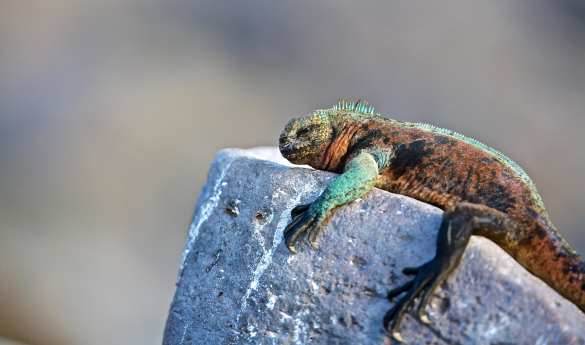Ecuadorian Food: Top Traditional Dishes You Must Try
Food in Ecuador ranges from a delicious mix of herbs and vegetables to freshly caught delicacies right off the coast. With so many incredible dishes on offer, here’s what we recommend you try.
13 April 2023

Compared to other South American countries, Ecuador is relatively small, but it certainly packs a mighty punch. From the incredible wildlife of the Galapagos to the lush Amazon Rainforest, the snow-capped peaks of the Andes, and the stunning Pacific coastline – you couldn’t ask for more. And yet, thanks to its astonishing biodiversity, Ecuador’s food culture is now making headlines too.
Enlightened travelers are returning with stories of freshly made, steaming hot empanadas in the cloud forest, plates of fresh ceviche by the sea full of zest and spice, and Quito’s restaurants rivaling the world’s best.
With such a range of landscapes comes an abundance of exciting ingredients. Chefs take the lead from whatever grows or is reared in the area. This is farm-to-table dining at its best. From coffee and chocolate to an array of colorful fruits and deliciously fresh fish – not to mention the variety of vegetables, herbs, and spices that flourish here – Ecuador’s food promises to get your tastebuds talking.
Famous Ecuadorian Food and Delicacies
Below, our travel experts have chosen some of the best Ecuadorian food and where to try it. Warning, this may leave you hungry.
Ceviche

Ceviche is one of South America’s exports that has become popular all over the world and is a favorite amongst our travel team too. It originated by the coast when fishermen would slice up their catches and cure them in citrus juices, onions, chilies, cilantro, and spices to eat without cooking them. Nowadays, ceviche has made its way into the best restaurants in Quito and beyond where it makes a seriously mouth-watering meal, washed down with a tangy pisco sour.
Where to try it: Mostly found in Pacific coastal regions, try ceviche when you’re in the Galapagos or, for a gourmet experience, in one of Quito’s fine-dining restaurants like Zazu or Nuema in the center north of the city.
Humitas

Humitas is a traditional food in Ecuador that’s similar to tamales and made with sweetcorn, onions, and spices creamed together and wrapped in the corn’s husk to be boiled or steamed. The finished dish is a deliciously thick and creamy paste, which is spread on toast for breakfast, eaten as a side dish, or even made sweet for dessert. Families in Ecuador often have their own recipe for humitas, adding extras like sugar or cheese.
Where to try it: Humitas is found in the parts of Ecuador where corn grows freely, like the highlands. Our favorite way to have it is by stopping off at a local café and asking for humita with a cup of fresh coffee.
Fritada & Llapingachos

Fritada is one of the most popular traditional dishes in Ecuador. It’s made by braising pork in orange juice, onion, garlic and cumin. The pork is then fried in a brass pan over hot flames – giving the dish its name, fritada meaning fry. The delicious meat is eaten with llapingachos, which are simple but very tasty potato patties filled with onion, cheese and herbs.
Where to try it: Fritada is a traditional Ecuadorian dish that originates from the Andes. Try it when you’re in the Central Highlands, in one of the area’s lovely colonial towns like Riobamba.
Encebollado

Alleged to cure hangovers and packed with vitamins and antioxidants, this is one of Ecuador’s national dishes that you don’t need an excuse to try. Encebollado is made using fresh tuna, yuca or cassava root, tomatoes, onions, cilantro, and spices and served with curtido (fermented cabbage kind of like kimchi) or pickled onions and tomatoes on top. The flavorful fish stew goes particularly well with crispy plantain chips dipped in it.
Where to try it: Encebollado’s recipe was initially created by fishermen using their catch of the day fresh out of the water, but you will now find it on the menu in restaurants all over Ecuador.
Cuy

This one isn’t for everyone, however, cuy (guinea pig) has been eaten in the Andes for over 5,000 years and is particularly popular in the highlands of Ecuador. So, if you’re feeling adventurous and want to sample something truly local, then look out for it in restaurants, and markets.
Where to try it: Although local to the mountainous regions, you will find cuy all over Ecuador, often roasted on a spit. If the thought of a whole guinea pig feels too much, try a more palatable version in one of Quito’s top restaurants.
Empanadas

Possibly one of Ecuador’s dishes that you’ve already tried or heard of, these crescent-shaped pastries are stuffed with hot, savory fillings like meat, cheese, and vegetables, then baked or fried. Perfect for eating on the go, this Ecuadorian food is often sold from street food stalls as a warming snack, but smarter restaurants also serve them too.
Where to try it: For something more indulgent, head to Somos in Quito to sample its dedicated empanada menu.
Bolon de Verde

Bolon de verde are small, fried plantain dumplings, filled with cheese, herbs and spices, and one of the area’s most famous vegetarian dishes – and even considered Ecuador’s national dish! Eaten at breakfast and washed down with a glass of freshly squeezed orange juice or hot cup of coffee, they’ll give you enough fuel to face a day of forest hikes or Galapagos wildlife exploring.
Where to try it: Bolon de verde originates in the coastal regions of Ecuador. Try them while visiting the southern city of Guayaquil, and while you’re there, be sure to check out the excellent restaurant at the Relais & Chateau Hotel Casa Julian.
Maito

Maito is a traditional dish found in the Amazon jungle. Fish (and sometimes chicken too) is salted, placed on a bijao leaf with a mixture of mashed yucca, plantains, tomato, onions and spices and then wrapped up and roasted over an open fire. The bijao leaf adds extra flavor to the dish, which you’ll find at market stalls and luxury lodges all over the Amazon.
Where to try it: This is the type of dish you’ll see if you join Scott Dunn’s unforgettable community program, which involves heading into the Amazon for a traditional lunch cooked by local farmers, made using ingredients grown and found in the Rainforest.
Ecuador’s Traditional Drinks and Delicacies
We couldn’t write about famous Ecuadorian food without mentioning a couple of the amazing sweets and drinks on offer too.
Chocolate

Ecuador is celebrated for its single-origin chocolate, which is created from the rare Arriba cacao beans, and collected by individual growers on a small scale. This results in its delicious taste. From rich hot chocolate to chunky cubes, or sweet chocolatey desserts, Ecuador’s cocoa beans are some of the best in the world.
Where to try it: Head to the award-winning chocolate shop and factory Yumbos in Quito and try dark chocolate infused with chili, lemongrass, coffee, or salt. Alternatively, join a Gastro Tour of Quito, or, if you’re staying at Casa Gangotena, don’t miss the two-hour chocolate tasting run by the hotel’s chef.
Colada Morada

Colada morada is a purple smoothie, typically drunk on the Day of the Dead, when people believe that the blood red/purple juice symbolizes the life of people who have moved on from the living world. It is made using:
- Purple corn
- Raw oats
- Cloves
- Cinnamon
- A selection of fruits, which might include pineapple, naranjilla (a traditional Ecuadorian fruit similar to grapefruit and rhubarb), passion fruit, berries, or others.
The drink is typically combined with Ecuadorian bread rolls that have been decorated to look like children, called guaguas de pan – meaning ‘bread babies.’ Ecuadorians traditionally left these at burial sites when someone died to mark the grave and give the dead something to eat.
Where to try it: Colada Morada is found all over Ecuador in October and November.
Canelazo

Perfect for warming up on cooler evenings, canelazo is a hot, spiced, rum drink typical to Andean countries. Similar to a hot toddy, its ingredients are:
- Brown sugar
- Cinnamon
- Cloves
- Orange and lime juice
- Rum or aguardiente, which is a generic term for distilled alcohol in South America
Where to try it: Have a cup of canelazo when you’re visiting somewhere like Cotopaxi in the highlands.
What Is the Typical Lunch in Ecuador?
A typical Ecuadorian lunch will usually consist of three courses. You might start with a soup, then have meat served with potatoes or rice, followed by dessert (postre) and coffee. Lunch is the main meal of the day due to the high altitude that many people live in. Eating less at night reduces altitude sickness, so most people will have smaller evening meals or just a snack, and a large lunch.
What Does Typical Ecuadorian Food Consist Of?
Food in Ecuador differs quite a bit between its three main regions; the Andes mountains, the Amazon Rainforest, and the coast (including the Galapagos Islands). Because of the varying environments, the types of food that grow in the areas change too. In the highlands, you’re more likely to find potatoes, rice, and grains, along with several types of meat, including cuy. In the lower lands, by the coast, the cuisine focuses more on fish and seafood, as well as plantains and soup. Meanwhile, in the rainforest, people tend to eat whatever they can hunt, fish, or grow. River-caught fish, pork, yucca, plantain, peppers, and a myriad of other fruits and vegetables make up the core diet in Ecuador’s Amazon Rainforest.
This entry was posted in and tagged Ecuador.
Start Planning Your Ecuador Vacation Today
To experience the delicious food in Ecuador, or the many other incredible cultural highlights, contact our travel experts today to see how you can personalize our suggested Ecuador tours to create your dream vacation.














